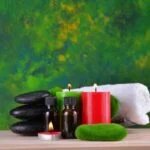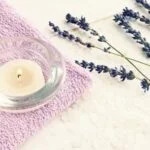Are you looking to indulge in a little self-care or create a thoughtful handmade gift for a loved one? In this article, we will explore the art of making aromatherapy soaps, and how these beautifully scented creations can elevate your bathing experience.
Learn about the benefits and uses of aromatherapy in soap making, understand essential oils as key ingredients, choose the right soap base, gather the essential tools and supplies needed, follow a step-by-step guide, discover popular aromatherapy soap recipes, and pick up some expert tips for success along with safety precautions.
Aromatherapy soaps offer not only cleansing but also therapeutic advantages by utilizing essential oils to induce certain moods or enhance well-being. By understanding the properties of different essential oils, you can create soaps that relax, invigorate, or soothe the senses. From lavender’s calming effect to citrus’s uplifting scent, the possibilities are endless when it comes to crafting your own aromatherapy soaps.
For those new to soap making or interested in delving into the world of aromatherapy soaps, this comprehensive guide will provide everything you need to know. From choosing the right base and understanding essential oils to carefully following step-by-step instructions and learning popular recipes, you’ll soon be on your way to creating your own unique blends that cater to your specific preferences and needs.
Whether you’re seeking relaxation after a long day or an energizing start in the morning, aromatherapy soaps can be tailored to suit any purpose. So let’s dive into this aromatic journey of soap making.
Understanding Essential Oils
The Power of Essential Oils
Essential oils are the heart and soul of aromatherapy soaps. These oils are derived from various parts of plants, including flowers, leaves, and roots, and are known for their potent fragrances and therapeutic properties. When used in soap making, essential oils not only add delightful scents but also offer a wide range of benefits, such as relaxation, stress relief, and skin nourishment.
Choosing the Right Essential Oils
When creating aromatherapy soaps, it’s important to select essential oils that complement each other and serve a specific purpose. For example, lavender oil is renowned for its calming properties and is perfect for creating a soothing soap blend, while citrus oils like lemon or orange can uplift and energize the senses. It’s crucial to research the properties of different essential oils and choose ones that align with the desired effects of your soap.
Essential Oil Safety
While essential oils offer numerous benefits, it’s important to use them with caution. Some essential oils may cause skin irritation or allergic reactions if not properly diluted. It’s crucial to always follow recommended guidelines for dilution ratios and patch test your blends before using them in larger quantities.
Additionally, certain essential oils should be avoided during pregnancy or by individuals with specific health conditions. Prioritizing safety when working with essential oils is key to enjoying their benefits without any adverse effects.
Understanding how to make aromatherapy soaps involves mastering the art of blending essential oils to create beautifully scented soaps that offer therapeutic benefits. With knowledge about the power of essential oils, choosing the right ones for your soap blends, and prioritizing safety measures when working with them ensures that you can create high-quality aromatherapy soaps at home.
Choosing the Right Base
When it comes to making aromatherapy soaps, choosing the right base is crucial for achieving the desired results. There are several different types of soap bases to consider, each with their own unique benefits when it comes to incorporating essential oils and creating beautifully scented soaps. Here are some common soap bases used in aromatherapy soap making:
- Glycerin Soap Base: Glycerin soap base is a popular choice for aromatherapy soaps due to its clarity and ability to easily incorporate essential oils. It is also known for its moisturizing properties, making it a great option for creating nourishing and fragrant soaps.
- Shea Butter Soap Base: Shea butter is a luxurious and nourishing base that is perfect for aromatherapy soaps. It can help create a creamy lather and provide added moisture to the skin, making it ideal for those looking for a soothing and moisturizing soap.
- Coconut Oil Soap Base: Coconut oil has natural cleansing properties and creates a rich lather, making it an excellent base for aromatherapy soaps. It also has a light and fresh scent, which can complement a wide range of essential oils.
When choosing the right base for your aromatherapy soaps, it’s important to consider the specific effects you want to achieve with your final product. Whether you’re looking for moisturizing properties, a rich lather, or clarity in your soap base, there’s a suitable option for every preference.
Additionally, keep in mind that some bases may require different techniques or considerations when incorporating essential oils. Understanding the properties of each base will not only help you choose the right one but also ensure the successful integration of your chosen essential oils into your aromatherapy soaps.
Lastly, don’t be afraid to experiment with different bases to find the perfect fit for your aromatherapy soap recipes. Each base offers its own unique characteristics that can elevate your homemade soaps and provide an enjoyable aromatic experience during use.
Remember – Take note of all these useful factors as you learn how to make aromatherapy soaps at home.
Essential Tools and Supplies
Creating your own aromatherapy soaps at home can be a fun and rewarding experience. To get started, you will need to gather the essential tools and supplies necessary for the soap making process. Here is a comprehensive list of everything you will need:
- Soap base: This is the primary ingredient for making aromatherapy soaps. You can choose from a variety of bases such as glycerin, shea butter, or goat’s milk, depending on your preference.
- Essential oils: The key to creating beautifully scented soaps, essential oils come in a wide range of fragrances and therapeutic properties. Be sure to choose high-quality, pure essential oils for the best results.
- Mixing bowls: You will need a few mixing bowls for melting the soap base and blending in the essential oils and other ingredients.
- Soap molds: These come in various shapes and sizes and are used to shape the melted soap into bars or other desired forms.
- Double boiler or microwave: You will need a way to melt the soap base, either using a double boiler on the stove or a microwave-safe container.
In addition to these main ingredients and tools, you may also want to have some optional supplies on hand such as colorants, exfoliants (such as oatmeal or dried herbs), and decorative elements like dried flowers or botanicals. Once you have gathered all your supplies, you can begin the process of creating your own custom aromatherapy soaps at home.
For those who are new to soap making, it’s important to note that safety should always be a priority when working with essential oils and other ingredients. Be sure to read up on proper handling techniques and precautions before getting started. With the right tools and supplies, along with some creativity and patience, anyone can learn how to make aromatherapy soaps at home.
| Tools and Supplies | Description |
|---|---|
| Soap base | The primary ingredient for making aromatherapy soaps |
| Essential oils | Key for creating beautifully scented soaps |
| Mixing bowls | For melting the soap base and blending in essential oils |
| Soap molds | Used to shape melted soap into bars or other forms |
By gathering all these essential tools and supplies, you’ll be well-prepared to embark on your journey of making aromatic and therapeutic soaps right in the comfort of your own home.
Step-by-Step Guide
Making aromatherapy soaps at home can be a fun and rewarding experience. With the right essential oils and soap base, you can create beautifully scented soaps that offer a range of therapeutic benefits. Follow this step-by-step guide to learn how to make your own aromatherapy soaps at home.
Step 1: Gather Your Supplies
To get started, you’ll need the following supplies:
- Soap base (choose from options like glycerin, shea butter, or coconut oil)
- Essential oils (select your favorite scents with therapeutic properties)
- Soap molds
- Mixing bowl and spoon
- Soap colorants (optional)
Step 2: Melt the Soap Base
Start by cutting the soap base into small chunks. Place the chunks into a microwave-safe bowl and heat in short intervals until completely melted. Alternatively, you can melt the soap base using a double boiler on the stovetop.
Step 3: Add Essential Oils
Once the soap base is melted, it’s time to add your chosen essential oils. Use about 10-15 drops of essential oil per ounce of soap base for a nicely scented soap. Be sure to mix well to distribute the scent evenly throughout the soap mixture.
Step 4: Pour Into Molds and Let It Set
Carefully pour the scented soap mixture into your chosen molds. Gently tap the molds on a flat surface to release any air bubbles. Allow the soap to cool and harden for several hours or overnight before removing it from the molds.
By following these simple steps, you can create your own custom aromatherapy soaps right at home. Experiment with different essential oil blends and colors to make unique and personalized creations that cater to your specific preferences and needs.
Popular Aromatherapy Soap Recipes
Aromatherapy soaps are a wonderful way to enjoy the benefits of essential oils while getting clean. These soaps not only provide a pleasant and calming aroma, but also offer various therapeutic properties depending on the essential oils used. Here, we will explore some popular aromatherapy soap recipes that you can easily create at home.
One of the most popular aromatherapy soap recipes is lavender and chamomile soap. Lavender essential oil is known for its relaxing and soothing properties, making it perfect for unwinding after a long day. Chamomile essential oil complements the lavender with its calming and anti-inflammatory effects, making this soap ideal for sensitive or irritated skin.
Another beloved recipe is the citrus twist soap, which combines uplifting citrus essential oils like orange, lemon, and grapefruit. Citrus oils are known for their energizing and mood-boosting properties, making this soap a great choice for morning showers or whenever you need a little pick-me-up throughout the day.
If you’re looking for something more grounding and earthy, a patchouli and sandalwood blend could be perfect for you. Patchouli essential oil is often used for its grounding and balancing effects, while sandalwood essential oil is prized for its warm, woody aroma that promotes relaxation. This combination is great for creating a sense of calm and peace during bath time.
| Soap Recipe | Essential Oils Used |
|---|---|
| Lavender & Chamomile Soap | Lavender, Chamomile |
| Citrus Twist Soap | Orange, Lemon, Grapefruit |
| Patchouli & Sandalwood Soap | Patchouli, Sandalwood |
These are just a few examples of popular aromatherapy soap recipes that you can experiment with at home. Feel free to customize these recipes by adjusting the amount of essential oils used or by combining different scents to create your own unique blends.
Tips and Tricks for Success
Use High-Quality Ingredients
When making aromatherapy soaps, it’s crucial to use high-quality ingredients, especially essential oils. Opt for pure, therapeutic-grade essential oils to ensure that your soaps are not only beautifully scented but also harness the full benefits of aromatherapy. Using low-quality or synthetic oils may result in a less effective and less fragrant soap.
Mind Your Ratios
One of the key factors in creating successful aromatherapy soaps is getting the ratios of essential oils to soap base just right. Too much essential oil can irritate the skin, while too little may result in a lackluster scent. It’s important to do thorough research on recommended usage rates for each essential oil and follow recipes closely to achieve the best results.
Experiment With Blending Essential Oils
Aromatherapy soaps offer a wonderful opportunity to experiment with different essential oil blends. Don’t be afraid to mix and match oils to create your own unique scent profiles for your soaps. Keep track of the blends you create and their respective properties and effects, as this will help you fine-tune your soap-making skills over time.
By following these tips and tricks, you can ensure that your journey into how to make aromatherapy soaps is both enjoyable and successful. Happy soap-making.
Safety Precautions
In conclusion, making aromatherapy soaps can be a rewarding and fulfilling hobby that not only allows you to create beautifully scented products but also harness the benefits of essential oils for your overall well-being. By understanding the various uses and benefits of aromatherapy in soap making, choosing the right essential oils and base, and using the essential tools and supplies, you can create your own unique blends of aromatherapy soaps right at home.
Following a step-by-step guide, such as the one provided in this article, is essential for successfully creating aromatherapy soaps. It’s important to pay attention to details such as measurements and temperature when combining ingredients to ensure the best results. Additionally, by following popular aromatherapy soap recipes and applying expert tips and tricks for success, you can further enhance the quality of your creations.
Lastly, it’s crucial to keep safety precautions in mind when making aromatherapy soaps. Proper handling of essential oils and other ingredients is necessary to prevent any accidents or adverse reactions.
By adhering to these safety measures, you can enjoy the process of creating luxurious aromatherapy soaps while prioritizing your health and well-being. With the knowledge gained from this article on how to make aromatherapy soaps, you can embark on a creative journey that allows you to indulge in the art of soap making while benefiting from the therapeutic properties of essential oils.
Frequently Asked Questions
How Do You Make Aromatherapy Liquid Soap?
To make aromatherapy liquid soap, start by choosing a gentle liquid castile soap as your base. Add in essential oils like lavender, eucalyptus, or citrus for their therapeutic benefits. Mix well and transfer to a pump bottle for use.
How Do You Make Aroma Soap?
Making aroma soap involves adding fragrance oils or essential oils to a melt-and-pour soap base. Melt the soap base, stir in your chosen scent, pour into molds, and allow it to cool and harden before unmolding.
How Do You Make Essential Soap?
Essential soap can be made by combining a nourishing blend of oils like olive, coconut, and almond with lye and water to create the soap base. Then add essential oils for fragrance and therapeutic benefits before pouring into molds to set.

Are you looking for a natural way to improve your health and wellbeing?
If so, aromatherapy may be the answer for you.





